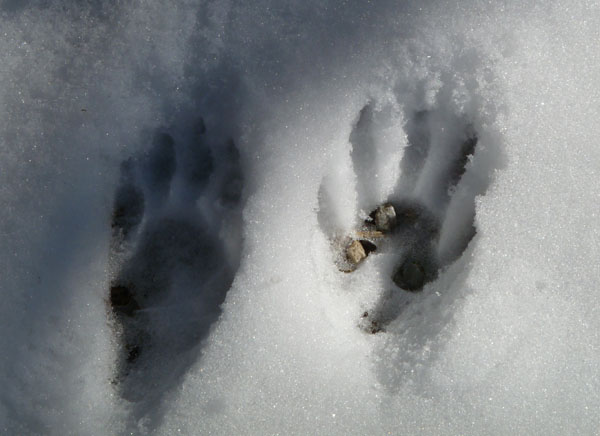
Winter is the most stressful time of year for most forms of life. The key hardships are a lack of food and cold temperatures. However, don’t let a reduction in activity appear as if there is nothing going on in the woods! A lack of food occurs for at least two reasons, both related to low temperatures. First, there is a reduction in active plant life which is the source of nearly all food chains. The second reason has to do with availability. For many animals, food sources are buried under snow or ice. Deep snow is not a problem for all creatures. To field mice, it is a protective layer against most predators. To predators, deep snow means a time of going hungry.
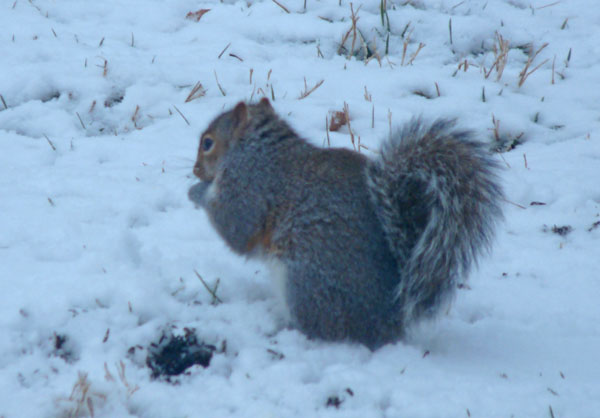
There are three main strategies to surviving inclement conditions: migration, dormancy, and toughing it out. Each species is suited to a particular variant of one strategy or the other, or a combination of strategic elements.
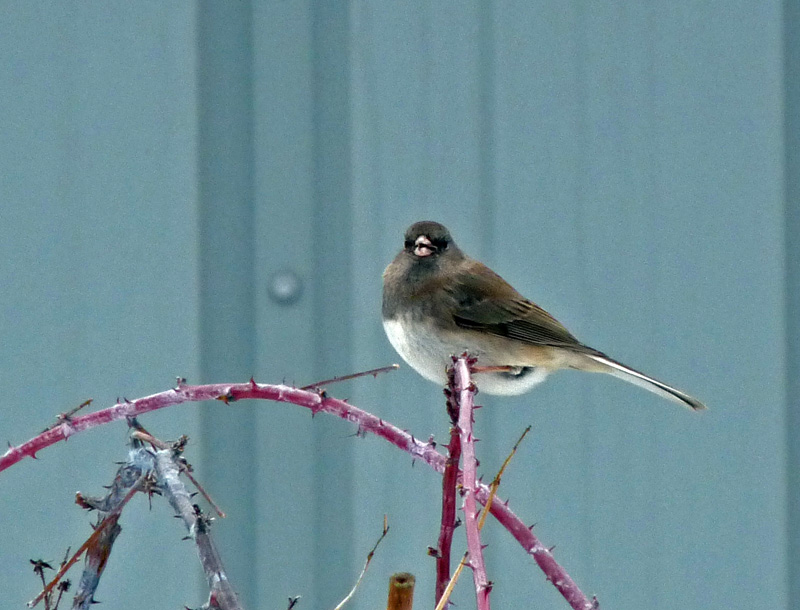
Migration is not always a dramatic, long-distance affair. Small song birds such as this Junco migrate to Kentucky from their breeding territory in Canada and Alaska. And we always thought sensible birds migrate someplace where it is warm all the time!
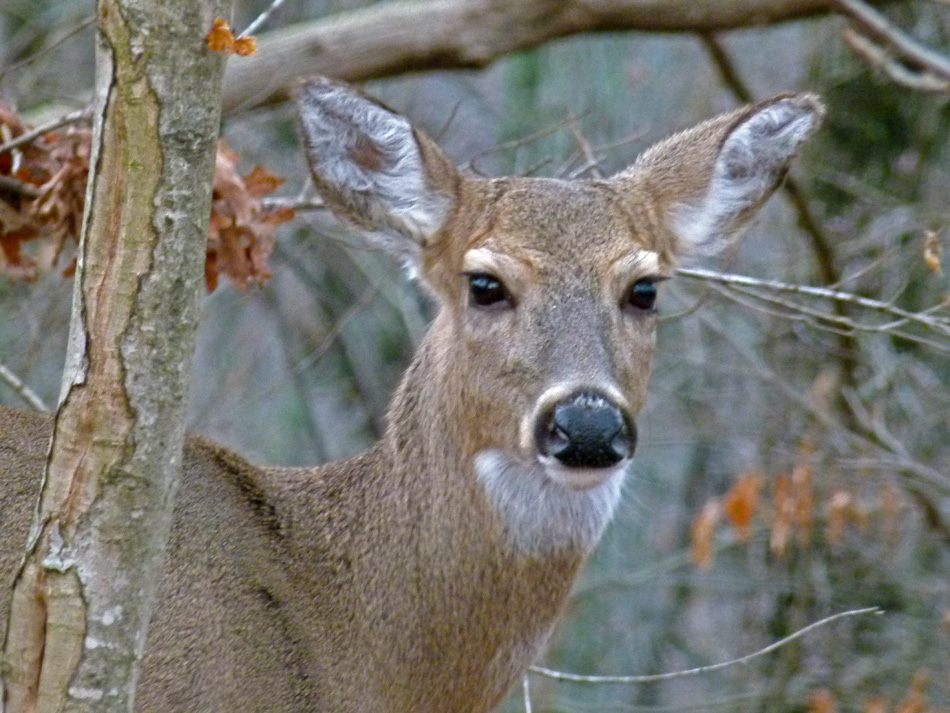
Deer adjust to the rigors of winter by naturally slowing their consumption of food and using stored fat for survival. Deer may lose up to 20 percent of their body weight during a severe winter. Some deer that have injuries or heavy parasite loads may not survive during the stressful winter months. But those casualties provide an important food source to predators and scavengers. Reptiles and amphibians move to protected places underground or under water to avoid freezing temperatures. Fish will move to different waters.

Opossums do not hibernate. Their greatest challenge during winter, especially in colder climates, is simply to survive. Very often opossums will alter their foraging habits during winter, coming out during the day when it is warmer rather than at night. It is not uncommon for opossums in northern regions to suffer frostbite during extremely cold periods. Their tails are particularly susceptible to frostbite as they have no fur covering to protect them. Sometimes opossums can be found relocating to basements or garages in order to escape the cold. The only way to prevent this is to make sure all openings are fully covered.

Winter remains an active time of the year because many species have adapted to active lifestyles during the winter. Birds eat seeds and any fruits they can still find – even poison ivy and mistletoe berries. Birds which eat insects in the summer will switch to seeds, acorns and fruits in the winter – anything they can find. The birds in my backyard all love peanuts which are in the feeder!
One of the biggest problems for all animals and birds in a cold snap is finding water when everything is frozen. A body of running water usually stays ice free, and many animals get water from the food they eat.
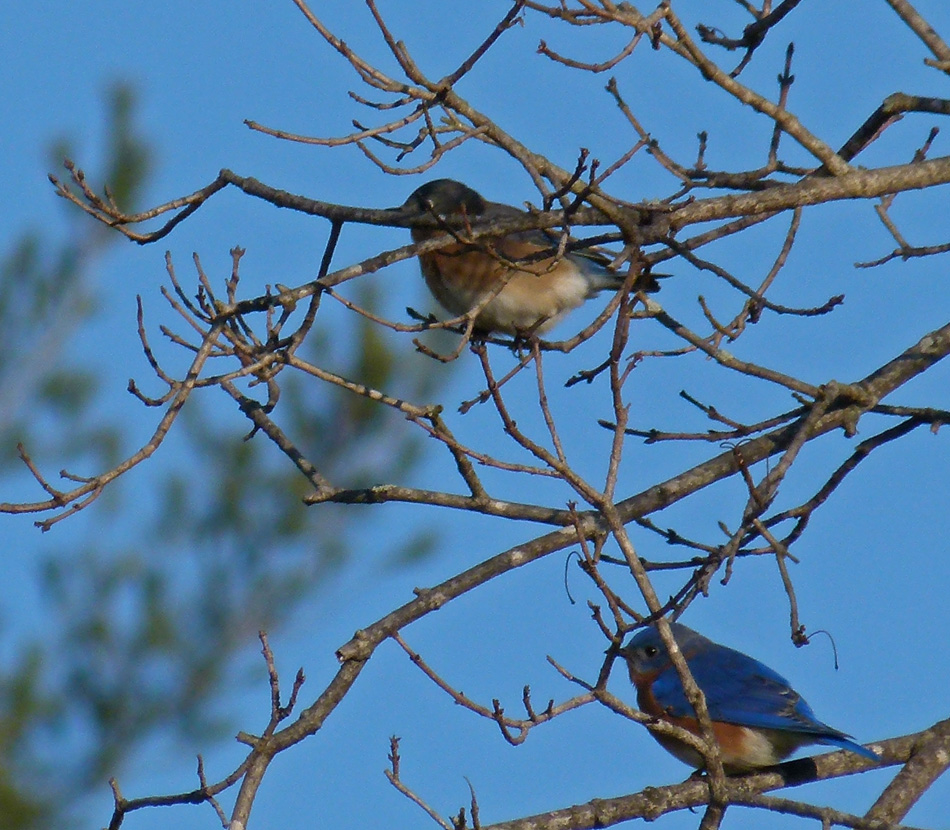
During an actual winter storm, birds will huddle next to the trunk of an evergreen tree, such as a pine or eastern red cedar, for shelter from snow, ice and the wind. We have even found several Bluebirds taking shelter in the nest boxes at the Nature Preserve, sharing bodily warmth! Like all the rest of us, animals and birds will be glad to see spring arrive!
Naturally yours,
~denapple

